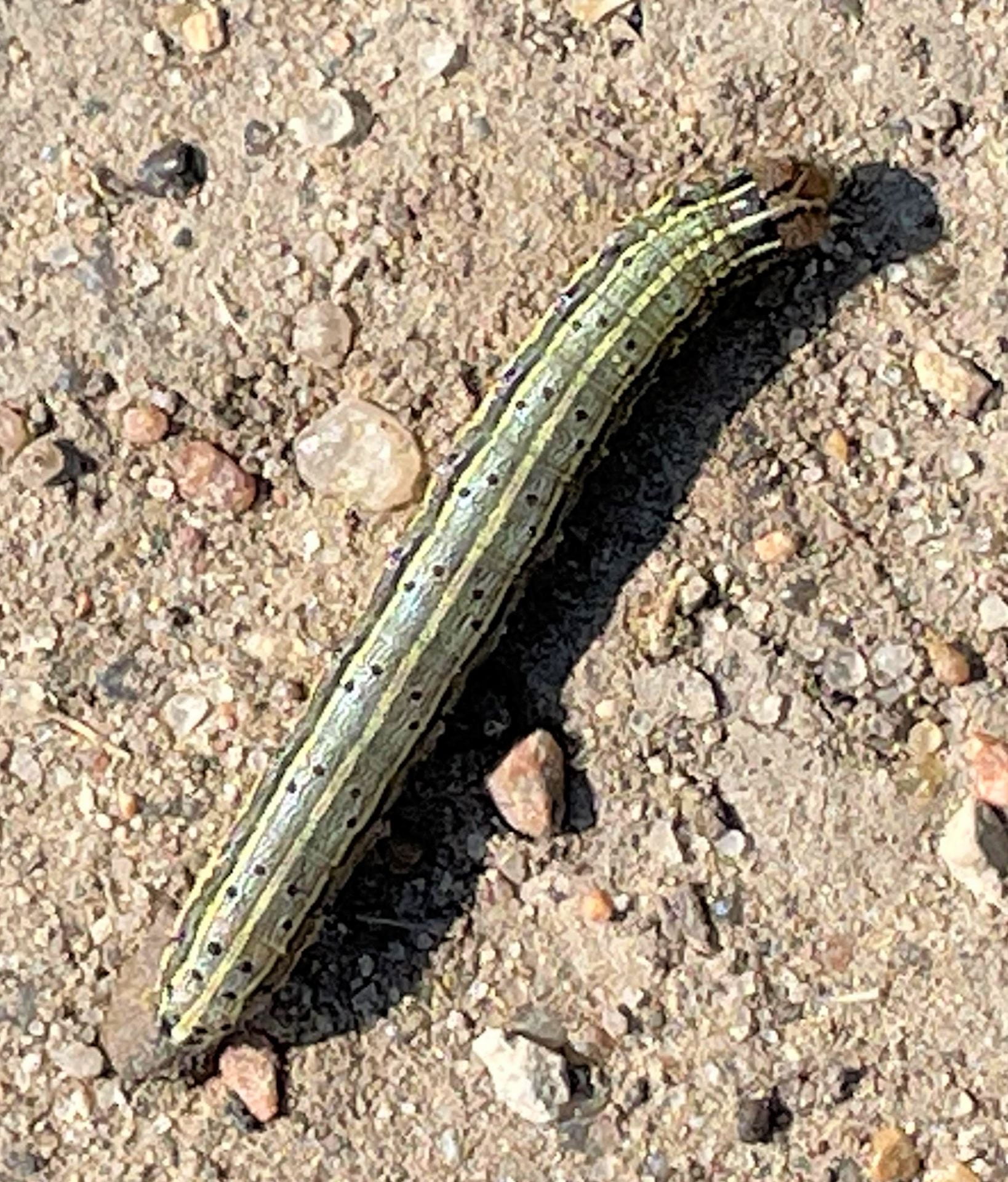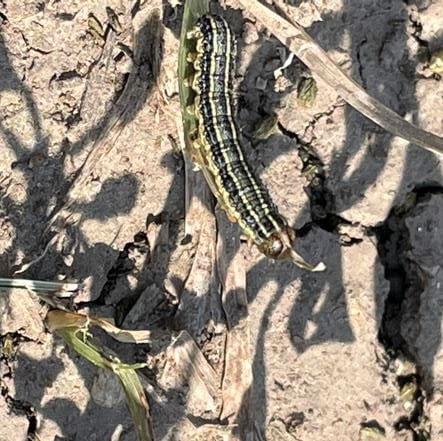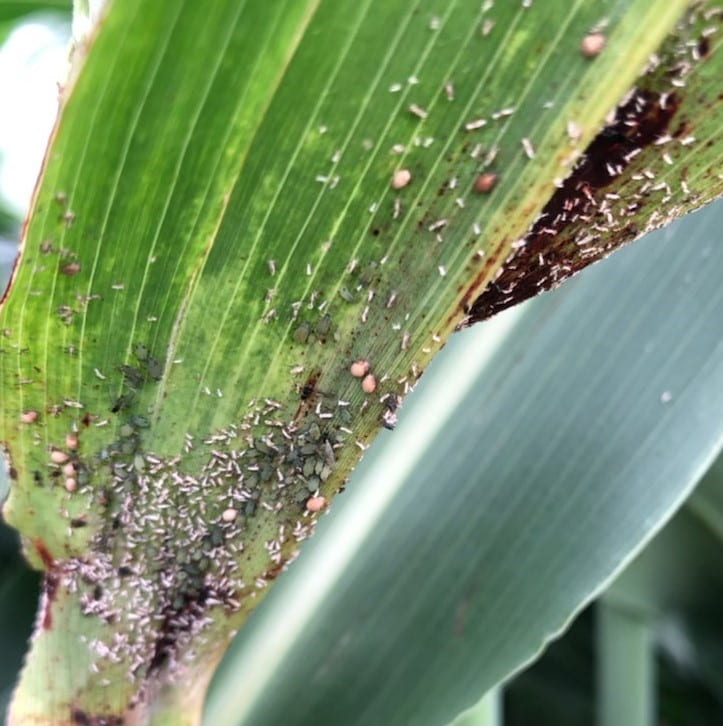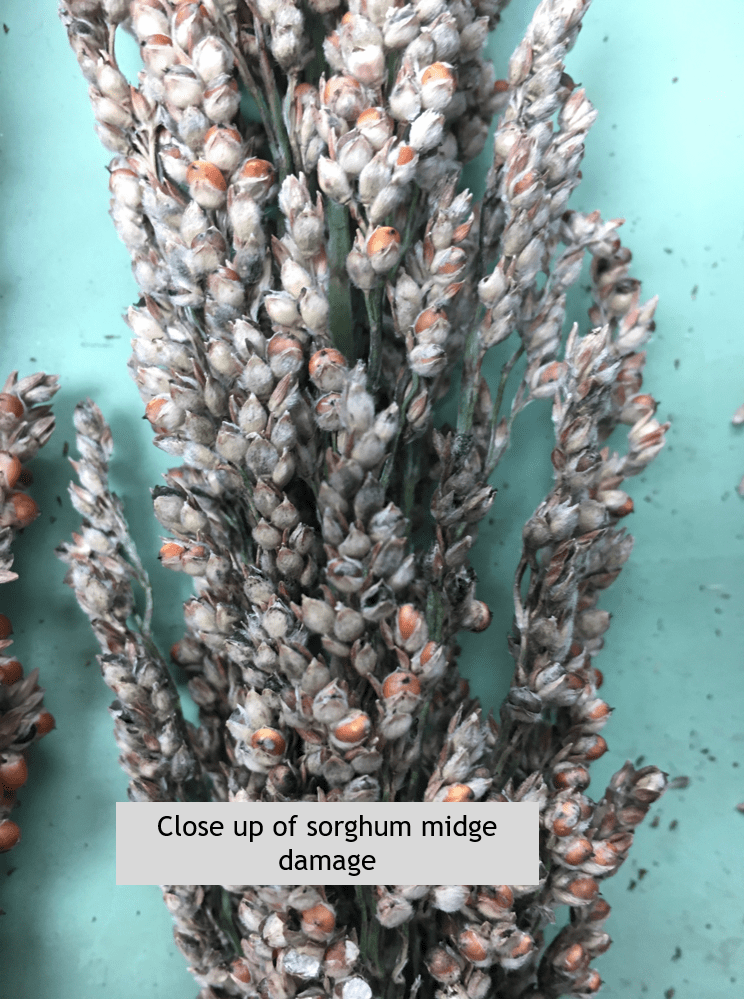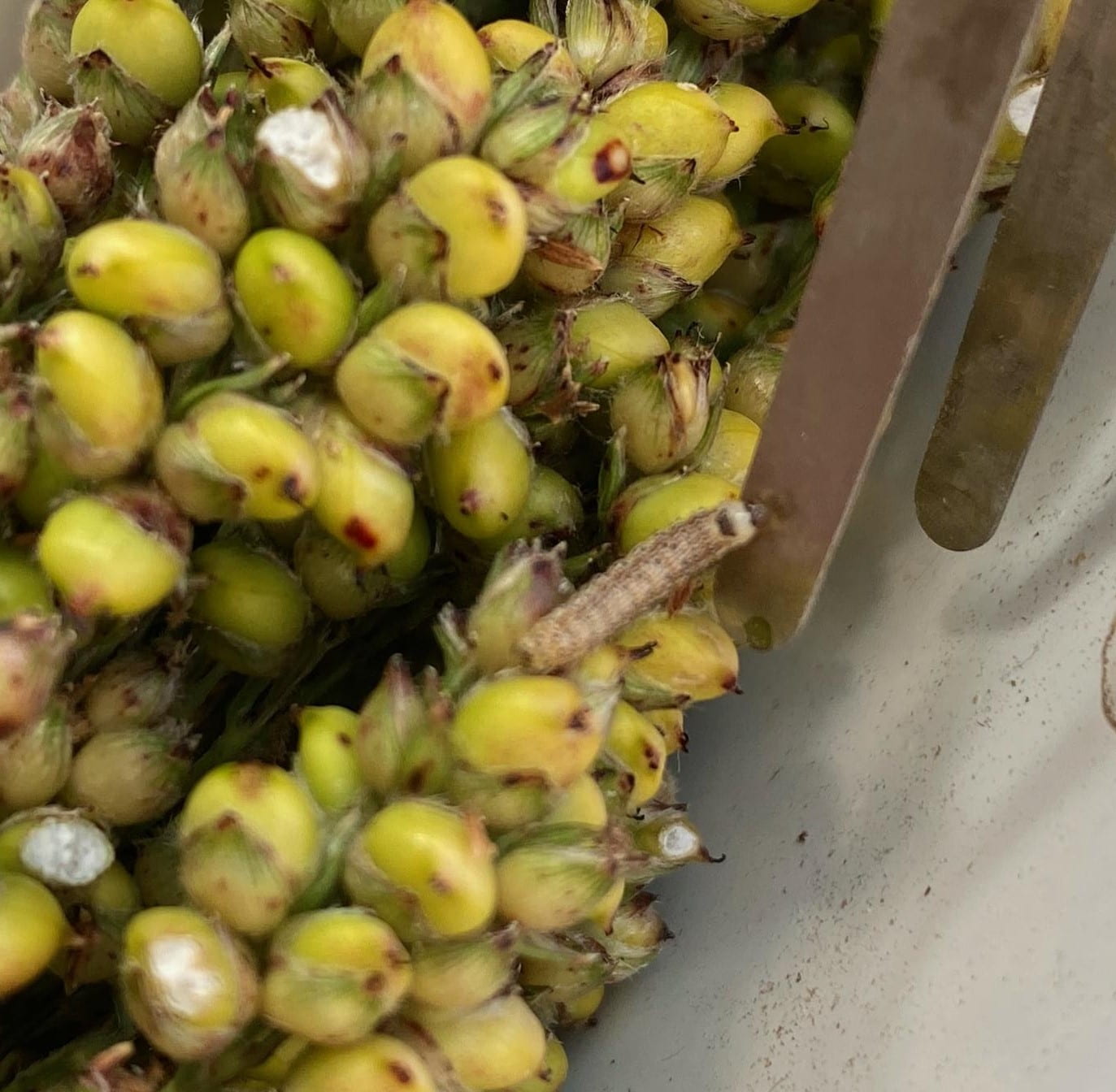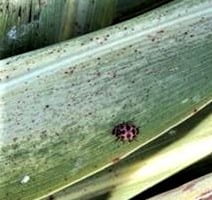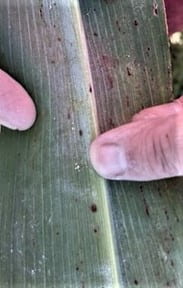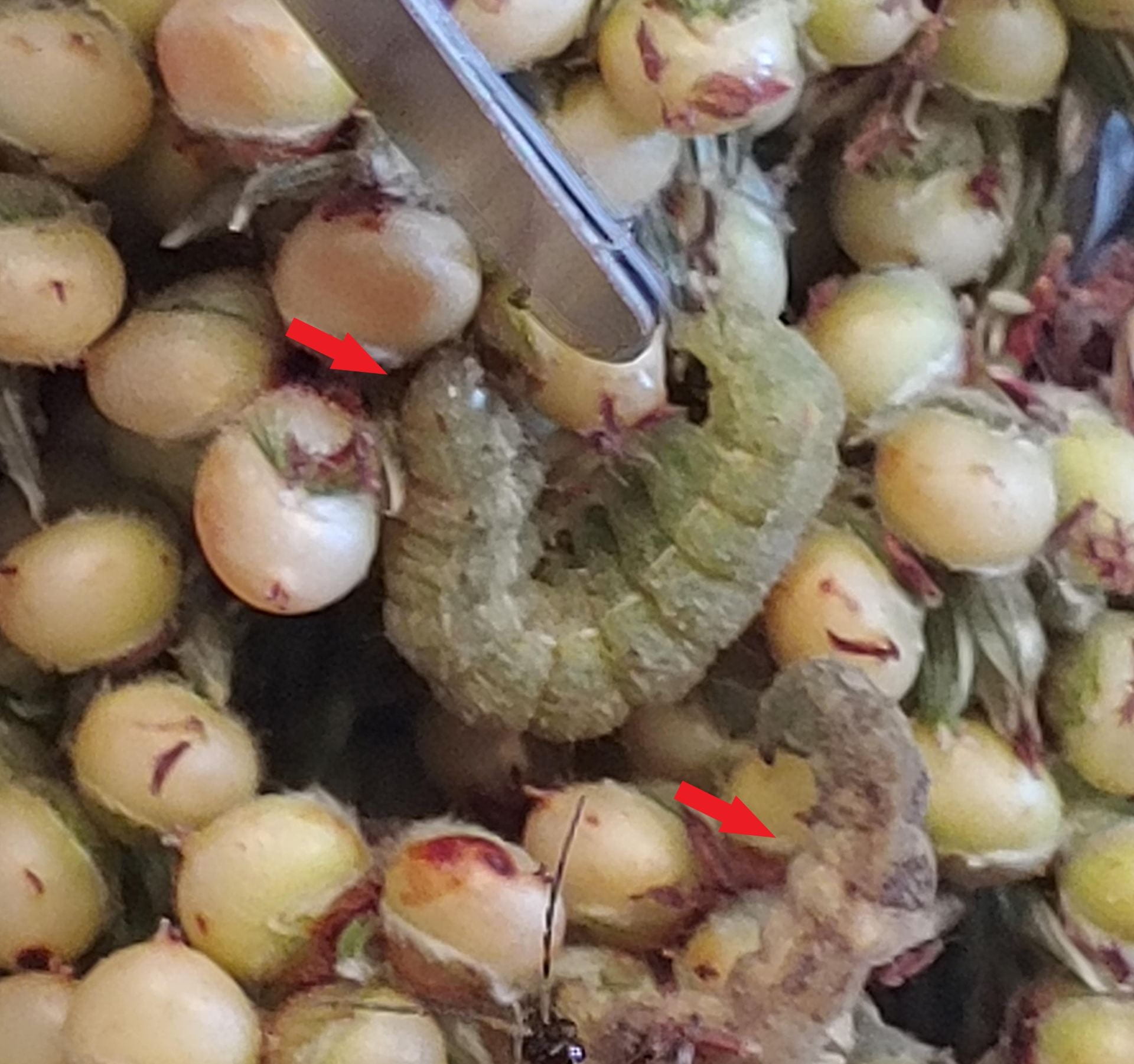–by Jeff Whitworth — Field Crops
Much of the sorghum around northcentral Kansas is just starting to reach the flowering stage. This is the most susceptible stage for the attack of “headworms”. To visualize the potential of a “headworm” infestation in sorghum, or even a “podworm” infestation in soybeans, just remember all the armyworms/fall armyworms/corn earworms that have been chewing on alfalfa/brome/and lawns the past few weeks. These larvae are, or have been, pupating and the adult moths will be, if they are not already, flying around depositing eggs on susceptible plants. Remember, sorghum is vulnerable to “headworms” from flowering until soft dough. “Headworms” cause 5% loss/worm/head but the infestation needs to be detected as early as possible while the larvae are still small (see fig 1. Relatively young corn earworm larvae from sorghum head on 24 Aug). The larger the larvae the more grain they have damaged and will continue to damage until they pupate.
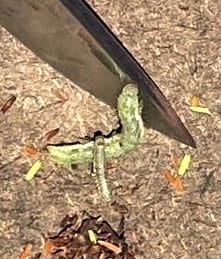
Figure 1. Young corn earworm larvae from sorghum (pic by Cody Wyckoff)
At the same time, sugarcane aphids are continuing to migrate into Kansas. Individual winged aphids are relatively common now, plus a few colonies. There are even a few colonies that are starting to cause concern (see fig 2. of a field in Geary County). Monitoring for “headworms” thus needs to continue in each field until the soft dough stage and for sugarcane aphids through the hard dough stage. For more information, regarding treatment thresholds/sampling/and products registered for the control of “headworms” or sugarcane aphids please refer to the 2021 KSU Sorghum Insect Guide.

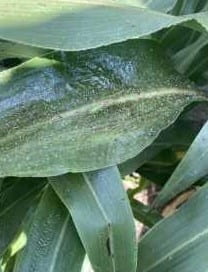
Figure 2. Sugarcane aphid colonies – photos provided by Mr. Chuck Otte, Geary County Extension.
